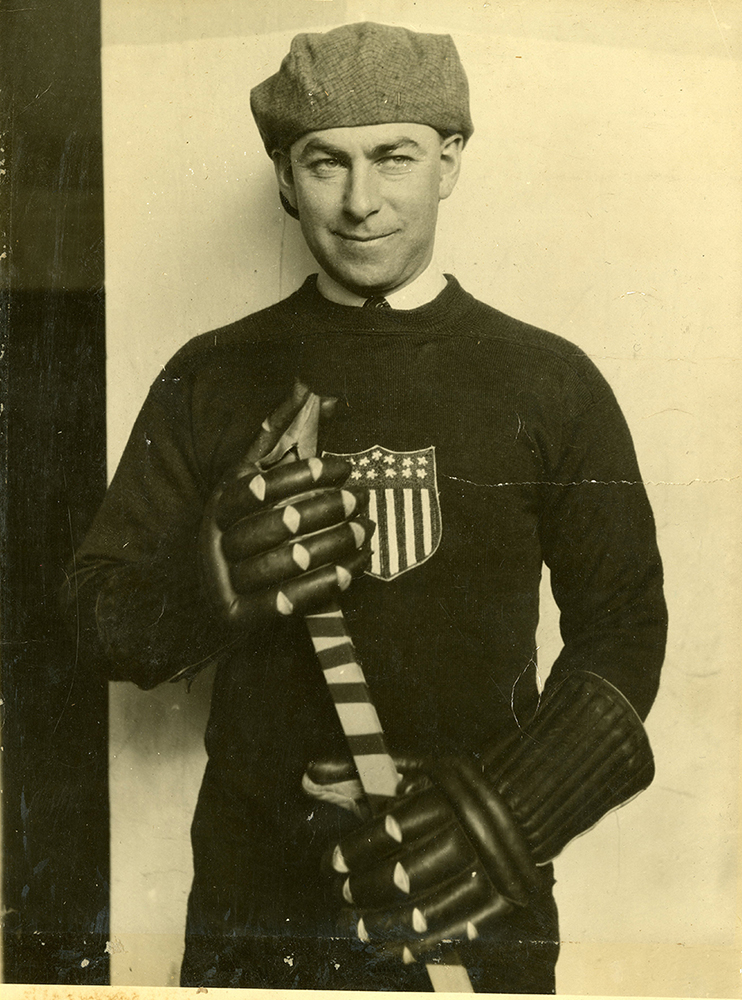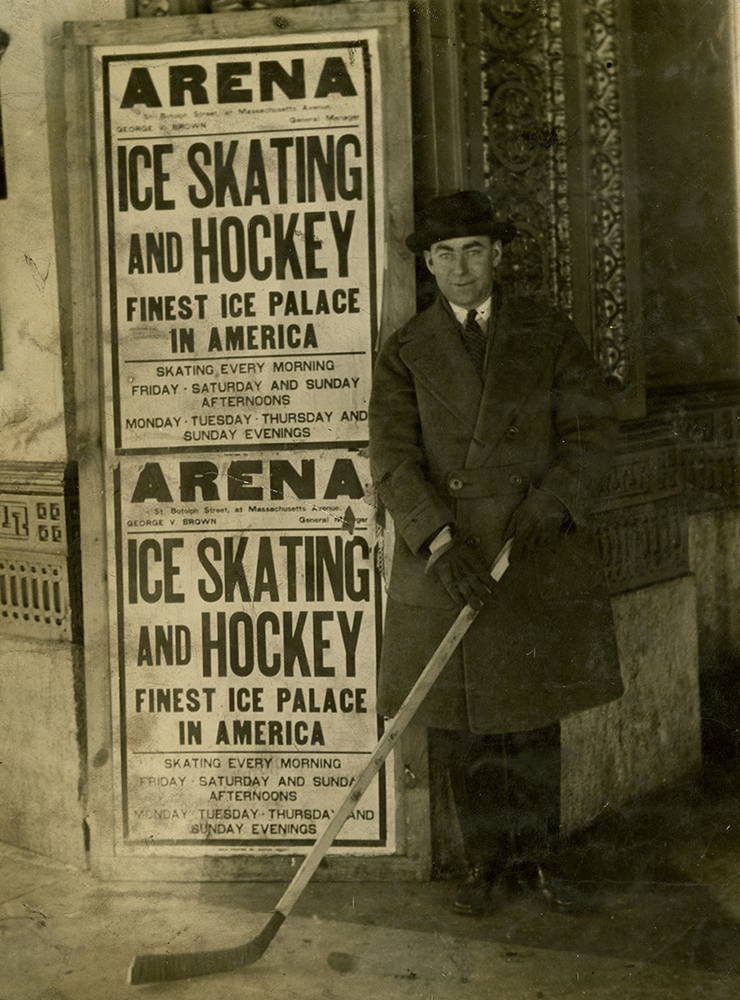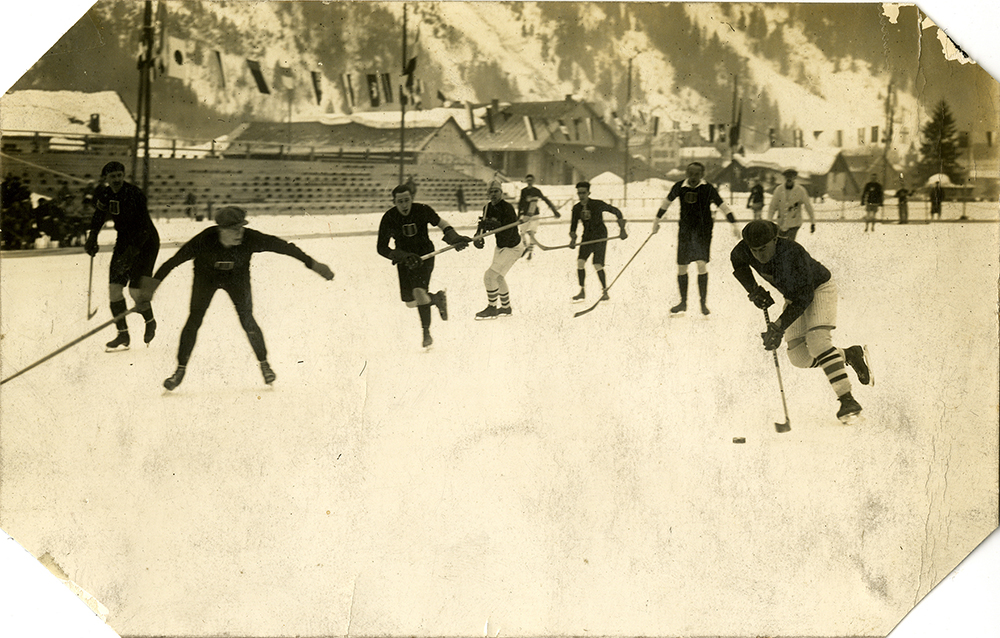
Every four years, the Winter Olympic Games recall the importance of Pittsburgher Herb Drury in the story of ice hockey and the Olympics.
Born in Midland, Ontario, Canada in 1895, Drury came to Pittsburgh in 1916 to play for the Yellow Jackets at Duquesne Gardens. Following military service in World War I, he represented the United States as a naturalized citizen in the 1920 Antwerp, Belgium Olympic Games, where hockey was added to the existing summer sports.
The 1920 U.S. Olympic team, chosen by Roy Schooley, the manager of both Duquesne Gardens and the Pittsburgh Yellow Jackets ice hockey team, featured 11 players, three with a connection to Pittsburgh – Herb Drury and Larry McCormick and his brother Joe, who captained the team. Joined by players from Boston and St. Paul, they trained at Duquesne Gardens, playing a series of exhibition games against Canadian teams to raise money for the journey to Belgium. There they represented the U.S., defeating Czechoslovakia 16-0 and outscoring their opponents by a 52-to-2 ratio. Although the U.S. lost to Canada in the finals, Drury returned to the Pittsburgh Yellow Jackets as a silver medalist.
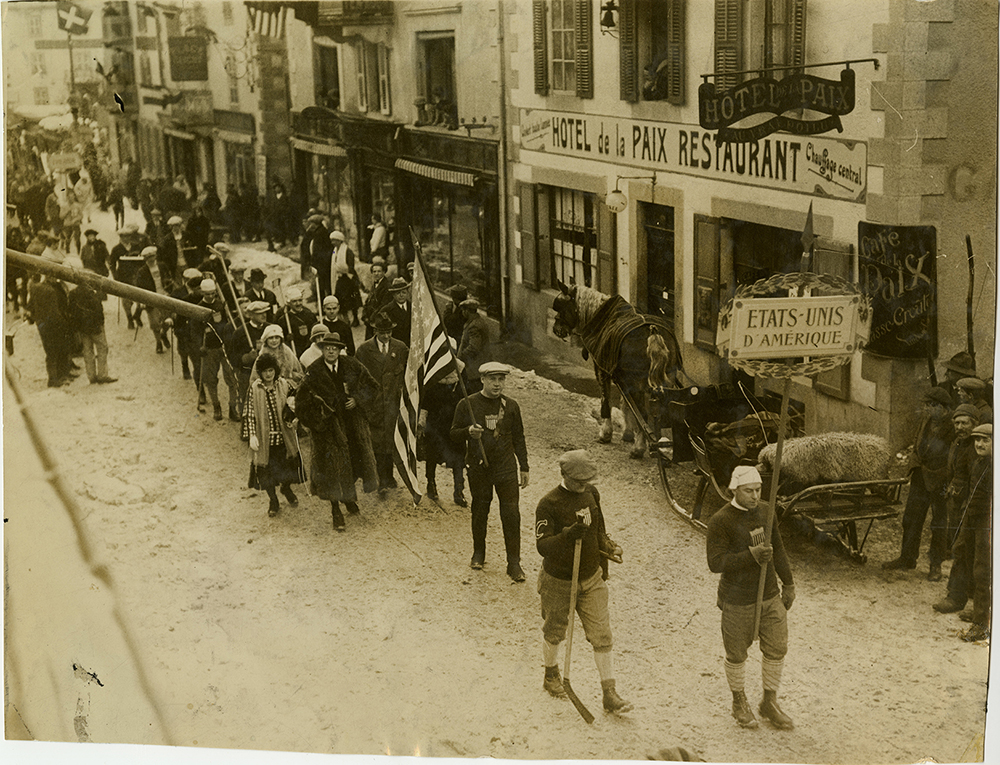
In 1924, Drury headed for the outdoor rink in Chamonix, France to compete in the first ever Winter Olympic Games. Drury was the only Pittsburgh player to return from the 1920 squad. As the 258 athletes from 16 countries paraded through the streets of Chamonix for the opening ceremonies, Drury led the American contingent, carrying the banner for his adopted country.
The scrappy defenseman had an incredible offensive run in frigid conditions, as he scored an astounding 22 goals and notched three assists for 25 points in just five games. He would ultimately score the only U.S. goal in the gold medal game in a losing effort against his native Canada.
With his second silver medal in hand, Drury returned to Pittsburgh and signed with the new National Hockey League team, the Pittsburgh Pirates, in 1925. He played for the Pirates for five years. When the team moved to Philadelphia in 1930, Drury went along, playing his final season in the NHL at age 35.
Drury played 213 games in his NHL career, but he will always be remembered for his high-scoring performance in the first Winter Games in 1924. He retired to Pittsburgh, where he lived until his death in 1965.
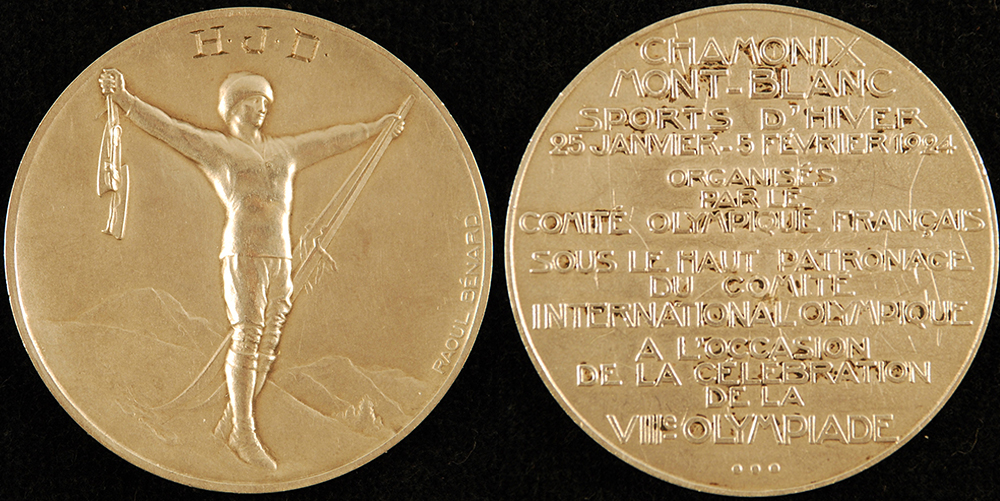
Drury’s silver medal and a scrapbook of pictures documenting his professional and Olympic career were left to a nephew, Frederick Favo, who donated them to the History Center. This important story of an adopted son who made early hockey history is part of the Western Pennsylvania Sports Museum – documenting a Pittsburgh hockey player who became an Olympic pioneer, twice winning silver on Olympic ice.
Anne Madarasz is the Director of the Curatorial Division, Chief Historian, & Director of the Western Pennsylvania Sports Museum.
Brady Smith is the Director of Marketing and Communications at the History Center.
